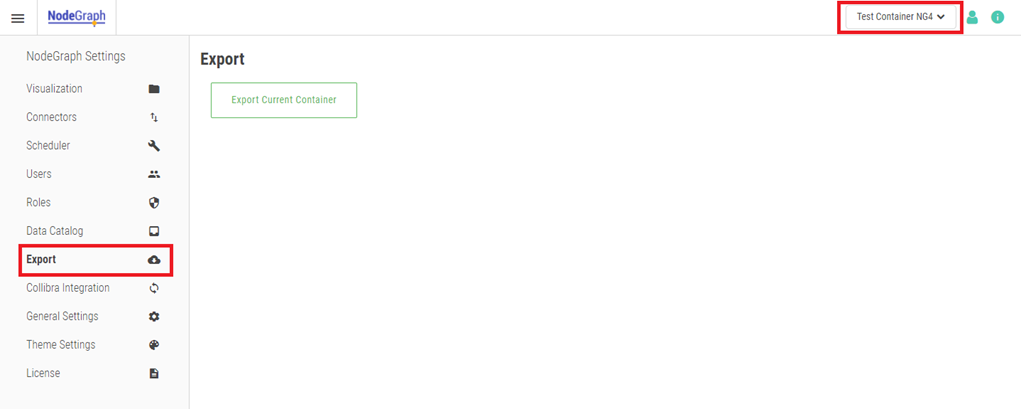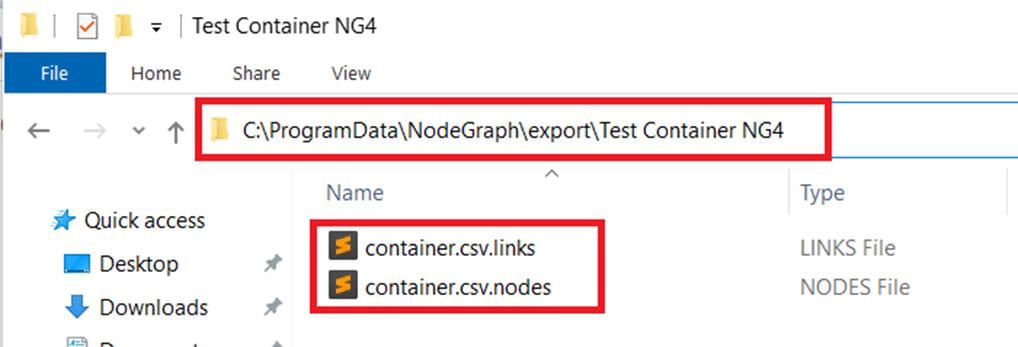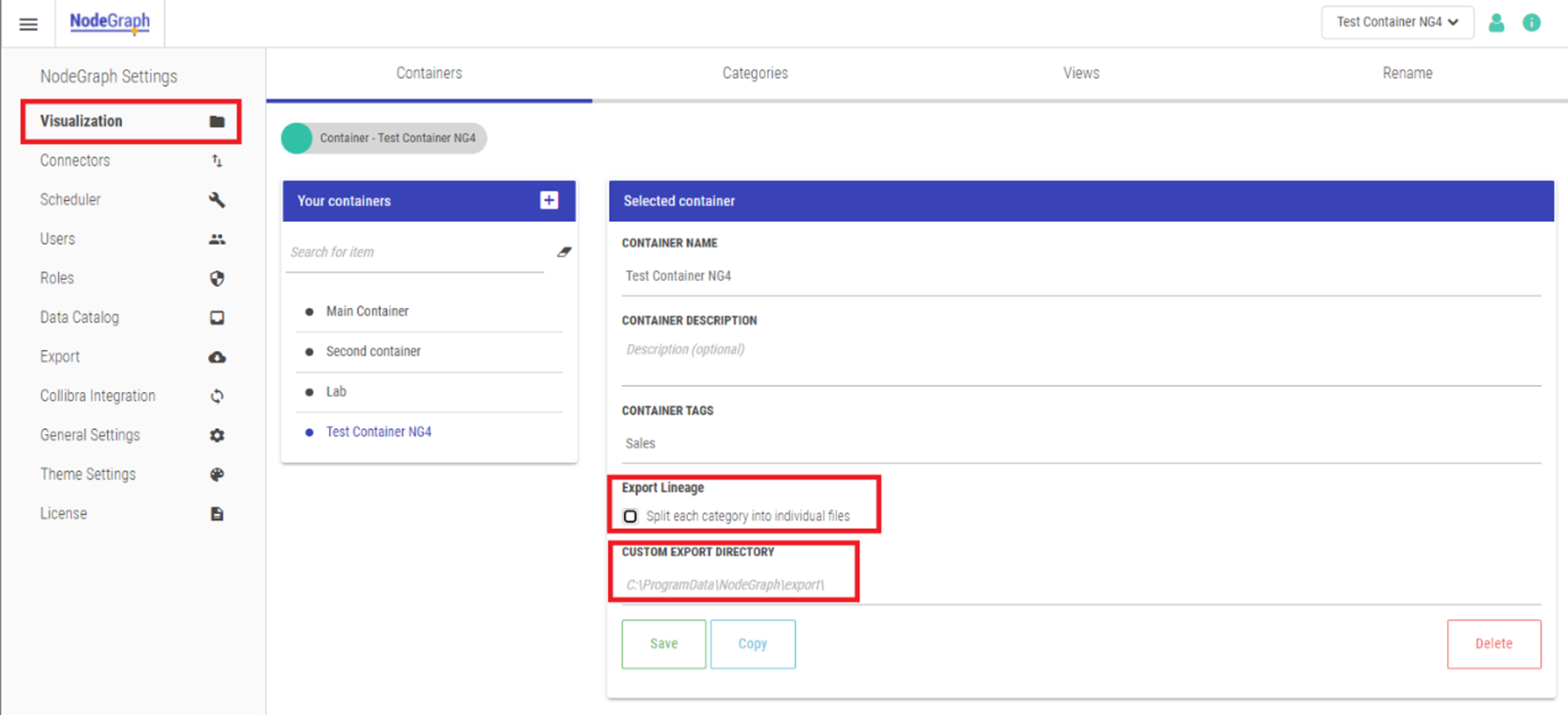Export
Export allows you to export your containers’ lineage to flat-file format with all nodes and their internal relation.
Scenarios when this is useful can be:
-
Include a container's dataset as part of a bigger picture
-
This also allows this subset to be static
-
-
Reading these data files into a 3rd party software for further analysis
Click on “Export Current Container” to generate links and node files that can be used to import lineage into other systems. The container that will be exported is the one selected in the top right corner of the settings screen. The files will be saved to \\ProgramData\NodeGraph\export\ in a folder named like the selected container. You can change this folder under the container settings.
Export current container

All nodes and links that are seen in a container will be exported. The node files will be exported with a unique id (uid) for each node. One row will represent a node. The link files will be exported with a source uid and a target id. Each row represents a line between two nodes. All files will be exported in csv format.
Exported lineage files

Please see Appendix 4 for information about how to import the files into NodeGraph.
If you see an error message when you try to export your container lineage, it is because your installation is not licensed for it. Please contact Qlik Support for more information.
Container settings for export

